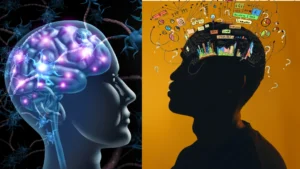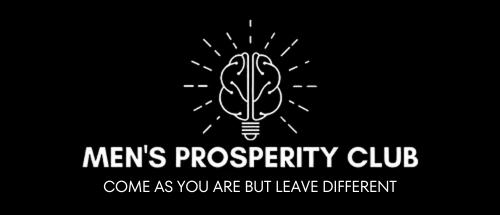The Law of Attraction has captured millions of minds since ‘The Secret’ launched in 2006. However, this concept extends far beyond modern self-help culture. Ancient philosophers and spiritual leaders understood that our thoughts shape our reality—but not quite how popular media suggests.
Ancient Wisdom Meets Modern Understanding
Long before the current fascination began, Buddha taught in the Ittha Sutta that wishing alone brings nothing. Instead, he emphasised engaging with practices that lead to desired outcomes. Similarly, Plato and Aristotle believed “like attracts like,” yet they never suggested passive thinking would manifest dreams.
These ancient thinkers recognised what modern neuroscience now confirms: our brains actively seek evidence to support our beliefs. Consequently, we create self-fulfilling prophecies that reinforce our existing worldview.
Furthermore, these philosophical foundations reveal a crucial truth often overlooked in modern interpretations. The ancients understood that attraction requires alignment between thought, emotion, and action. They viewed manifestation as an active process demanding personal responsibility rather than passive expectation.
Modern quantum physics adds another layer to this understanding. Whilst we shouldn’t overstate its implications, research suggests that observation affects reality at subatomic levels. This scientific principle parallels how focused attention influences the opportunities we notice and pursue in daily life.
The Neuroscience Behind Manifestation
Your brain operates like a sophisticated filtering system. As we develop, our experiences create belief patterns that become our personal truth. Subsequently, our minds work tirelessly to prove these beliefs correct, finding evidence everywhere to support them.
This process occurs through complex neural networks that strengthen with repeated use. Each time you have a particular thought or emotional response, you reinforce specific pathways in your brain. Over time, these pathways become superhighways of automatic response, making certain thoughts and behaviours feel inevitable.
Consider this common scenario: someone mentions a specific car model to you. Suddenly, you notice that exact vehicle everywhere. This phenomenon occurs because your Reticular Activating System (RAS) has switched on—your brain’s built-in “search engine” for whatever you’re focusing on.
The RAS filters approximately 2 million bits of information every second, allowing only relevant data to reach your conscious awareness. This remarkable system explains why two people can experience identical situations yet notice completely different aspects based on their current focus and beliefs.
Scientists have discovered that mental rehearsal activates the same brain regions as actual physical practice. Athletes use this principle to improve performance, whilst successful entrepreneurs visualise outcomes to prime their minds for opportunity recognition. This neurological reality forms the scientific foundation of effective manifestation techniques.

Why Positive Thinking Alone Isn’t Enough
Many people misunderstand the Law of Attraction, believing positive thoughts automatically create positive outcomes. Unfortunately, this oversimplified approach often leads to disappointment and self-blame.
Real transformation requires more than optimistic thinking. Deep-seated beliefs, particularly negative ones, create neural pathways that fire automatically when triggered. Therefore, changing your life means both cultivating positive thoughts and actively dismantling limiting beliefs.
The Self-Sabotage Trap
Personal experience often reinforces negative patterns. For instance, someone who believes relationships inevitably fail will unconsciously create situations that prove this belief correct. Their energy attracts partners who match these expectations, creating a destructive cycle.
This self-sabotage mechanism operates below conscious awareness. Your subconscious mind treats familiar pain as safety, even when it causes suffering. Therefore, people often recreate dysfunctional patterns because they represent known territory.
Consider professional athletes who consistently perform well until reaching peak moments, then mysteriously falter. Their subconscious beliefs about deserving success clash with their conscious desires, creating internal conflict that manifests as self-defeating behaviour.
Breaking this pattern requires conscious awareness and deliberate action. You must recognise your limiting beliefs, challenge them consistently, and replace them with empowering alternatives. This process demands patience, as deeply ingrained patterns resist change initially.
The most effective approach involves identifying your “safe zone”—the familiar emotional state you return to when stressed. Often, this zone reflects childhood experiences or repeated relationship patterns. Once identified, you can consciously choose different responses when triggered.
Practical Steps to Harness the Law of Attraction
1. Identify Your Core Beliefs
Start by examining your automatic thoughts about success, relationships, money, and self-worth. Notice patterns that consistently appear in your life—these often reflect your underlying beliefs.
2. Use Present-Tense Language
When changing habits, speak in the present rather than future tense. Say “I don’t allow this” instead of “I won’t allow this.” Your subconscious mind responds more effectively to immediate, present-moment instructions.
3. Activate Your RAS Deliberately
Choose specific outcomes you want to attract. Write them down, visualise them regularly, and actively look for opportunities that align with your goals. Your brain will begin noticing relevant possibilities you previously overlooked.
4. Address Energy and Attraction
Your emotional energy acts like a magnet, attracting similar energies. If you feel frustrated, angry or fearful, you’ll likely attract people and situations that match these vibrations. Conversely, cultivating genuine confidence and positivity draws more supportive circumstances.
This energetic principle extends beyond mere mood. Your core emotional state—shaped by beliefs about yourself and the world—broadcasts continuously through body language, vocal tone and behavioural choices. Others unconsciously respond to these signals, creating interpersonal dynamics that mirror your internal landscape.
Research in emotional contagion demonstrates how feelings spread between people through unconscious mimicry. Therefore, maintaining emotional equilibrium benefits not only your own well-being but influences everyone around you positively.
5. Overcome Negativity Bias
Human brains evolved with a negativity bias designed to keep our ancestors alive by focusing on threats. However, this ancient survival mechanism can sabotage modern manifestation efforts by constantly highlighting potential problems rather than opportunities.
To counteract this bias, deliberately practise gratitude and appreciation. Spend five minutes daily identifying positive aspects of your life, however small. This practice gradually rewires your brain to notice beneficial circumstances more readily.
Additionally, challenge catastrophic thinking by asking: “What evidence supports this worst-case scenario?” Often, you’ll discover that feared outcomes have little factual basis, freeing mental energy for constructive focus.
The 84-Day Transformation Rule
Neuroscience research shows that creating lasting change takes approximately 84 days, depending on the complexity of new habits. During this period, your brain builds new neural pathways whilst weakening old ones.
Consistency becomes crucial during this phase. Missing days doesn’t ruin progress, but regular practice accelerates the rewiring process significantly.
Realistic Expectations About Manifestation
The Law of Attraction works, but not through magical thinking. Instead, it operates through these measurable mechanisms:
- Enhanced awareness: You notice opportunities previously invisible
- Increased motivation: Clear goals inspire consistent action
- Improved energy: Positive focus attracts supportive people and circumstances
- Better decision-making: Aligned thinking leads to choices that support your objectives
- Heightened intuition: Focused attention develops pattern recognition skills
- Expanded network: Authentic enthusiasm draws like-minded individuals
However, remember that success rarely depends solely on your efforts. External factors, other people’s choices, and timing all influence outcomes. Therefore, maintain hope whilst taking practical action.
The key lies in understanding manifestation as probability enhancement rather than guaranteed outcome control. By aligning your thoughts, emotions and actions with desired results, you increase the likelihood of positive outcomes whilst remaining open to unexpected opportunities.
This balanced approach prevents the disappointment and self-blame that often accompany unrealistic expectations about manifestation. Instead of viewing failed attempts as personal inadequacy, you can assess what adjustments might improve future results.
Common Misconceptions to Avoid
Many people believe the universe will deliver desires without effort. This passive approach rarely succeeds because manifestation requires active participation. You must:
- Take concrete steps towards your goals
- Remain open to unexpected opportunities
- Adapt when circumstances change
- Persist through temporary setbacks

Applying These Principles to Relationships
Relationship patterns particularly demonstrate the Law of Attraction’s power. If you believe love is painful, temporary or unreliable, your energy will attract partners who confirm these beliefs.
Transforming relationship outcomes starts with examining your core beliefs about love, trust and worthiness. Then, consciously cultivate energy that attracts the partnership you genuinely desire.
This process isn’t about pretending or forcing positivity. Instead, it involves honest self-reflection, healing past wounds, and gradually building new, healthier patterns.
Many people unconsciously recreate childhood dynamics in adult relationships. If you experienced inconsistent affection, emotional unavailability, or conditional love, you might attract partners who replicate these patterns. Your nervous system recognises familiar relationship styles as “normal,” even when they cause suffering.
Healing requires developing secure attachment patterns through conscious relationship choices. This means learning to recognise healthy relationship behaviours and gradually feeling comfortable with genuine intimacy and consistency.
Professional relationship coaching can accelerate this transformation by providing external perspective and structured approaches to changing deeply embedded patterns. Working with a skilled coach helps identify blind spots that self-reflection might miss.
The Bottom Line
The Law of Attraction represents a genuine psychological principle backed by neuroscience research. However, it requires more than wishful thinking to produce meaningful results.
Success comes from combining focused intention with consistent action, addressing limiting beliefs whilst maintaining realistic expectations. When you align your thoughts, emotions, and behaviours with your desired outcomes, you create conditions for positive change.
Remember, you’re not trying to control the universe—you’re training your brain to recognise and act upon opportunities that support your goals. This practical approach transforms the Law of Attraction from a mystical concept into a powerful tool for creating genuine life improvement.
Ready to transform your life through proven psychological principles? Start by identifying one limiting belief that’s held you back, then commit to 84 days of consistent, present-tense affirmations to create lasting change.




